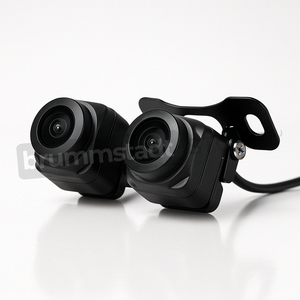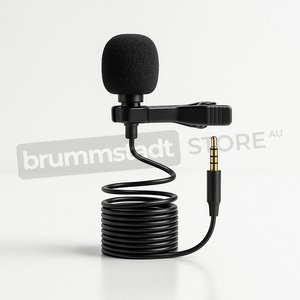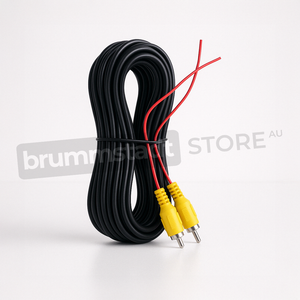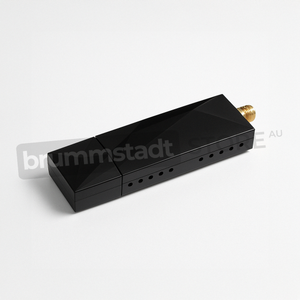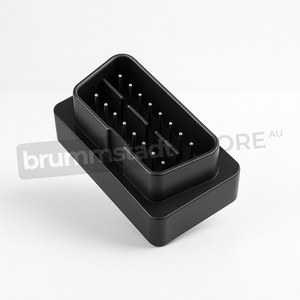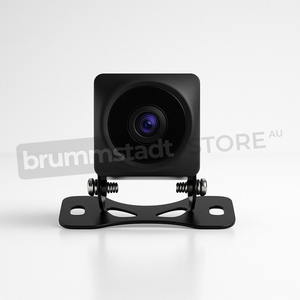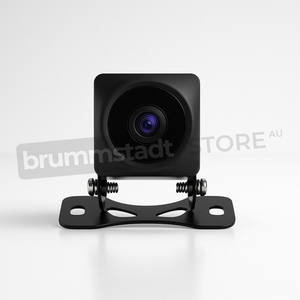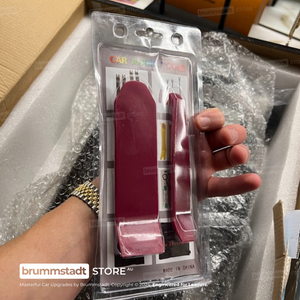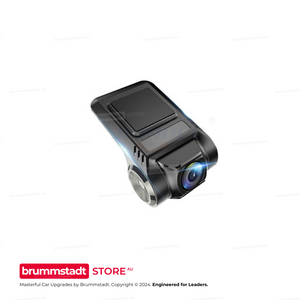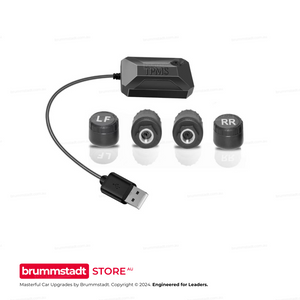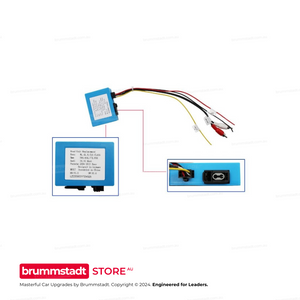Frequently Asked Questions
Everything you need to know about this head unit
Connect the single RCA cable with the yellow plug (included in your package) to extend your Bluetooth signal. This cable doubles as both a camera input AND a Bluetooth/WiFi antenna extension. The two small blue wires attached are antenna boosters that significantly improve connection stability. This simple connection takes 30 seconds and resolves 90% of Bluetooth issues. Make sure it's firmly connected even if you're not using a rear camera.
Try these proven solutions:
1. Quick Fix: Settings → Apps → Z-Link → Disable → Enable → Open (repeat each use)
2. Check Cables: Use the data/charge USB cable (not charge-only)
3. Bluetooth Setting: Disconnect all other Bluetooth connections - CarPlay needs exclusive access
4. Factory Reset Z-Link: Find the pink 'RESET' app, restart, reconnect Bluetooth, then try Z-Link
5. Sound Issues: Switch audio source to 'AUX' or 'USB/AUX' in your vehicle menu
Most issues are resolved with step 1 or 3!
The processor differs between models: The 2/32GB has a 4-Core processor, while 4/64GB and 8/128GB models feature the powerful 8-Core Cortex-A55 processor. Combined with RAM differences: The 2/32GB model with its 4-Core processor and limited RAM may experience slowdowns with heavy multitasking. The 4/64GB with 8-Core provides smooth performance for most users - no lag, seamless app switching, and enough storage for maps and music. The 8/128GB with 8-Core offers maximum performance with its generous RAM allowing unlimited multitasking and massive storage for extensive media libraries. Think of RAM like your desk space - more RAM means you can have more apps open simultaneously without slowing down.
Absolutely normal! These head units are complete replacement systems with their own GPS antenna, microphone, and Bluetooth module. Your factory connectors for these features won't be needed anymore. The important connections are: main power harness, speaker outputs, and the yellow RCA cable (even if not using a camera - it extends Bluetooth range). Any leftover factory plugs can be safely tucked away. If you're unsure about any connection, our support team is here 7 days a week.
Z-Link updates are handled through system firmware updates. Go to Settings → System → System Update. If an update is available, download it to a USB drive (FAT32 format) and install. Important: Never download Z-Link APKs from unofficial sources - they won't work and may cause issues. If you're having compatibility issues with newer iOS versions, the disable/enable workaround (Settings → Apps → Z-Link) usually resolves them while waiting for official updates.
Consider your usage:
• 2/32GB (4-Core): Budget option - fine for basic use, but may lag with multiple apps due to 4-Core processor and limited RAM
• 4/64GB (8-Core): Sweet spot - smooth Android Auto/CarPlay, multitasking, and ample storage
• 8/128GB (8-Core): Premium choice - unlimited multitasking, massive storage, future-proof for years
Most customers choose 4/64GB for the perfect balance of performance and value. The extra RAM makes a huge difference in daily smoothness!
The yellow RCA cable's blue antenna wires also boost WiFi signal! Make sure this cable is connected. Additionally, try these tips: Position the blue antenna wires away from metal surfaces, check that your phone's hotspot is set to 2.4GHz (not 5GHz) for better range, and ensure the head unit's WiFi sleep policy is set to 'Never' in Settings → WiFi → Advanced. For best performance with wireless CarPlay, keep your phone within 1-2 meters of the head unit.
Go to Settings → Sound → Equalizer and adjust to your preference. For more volume, increase the 'Loudness' setting. The 4/64GB and 8/128GB models have superior audio chips that provide cleaner, louder sound. If you have an amplifier, use the RCA outputs for best quality. Also check Settings → Factory Settings (password usually 126) → Audio settings for additional gain controls. Remember: higher-spec models (4GB+) include premium audio components for noticeably better sound.
Yes! Most vehicles work instantly. If not, use the steering wheel learning app: tap the steering wheel icon, press each button on your wheel, and assign functions. For newer vehicles with CANbus, we provide CANbus modules for automatic setup. Some vehicles may need the Key1/Key2 wires connected (usually included in our harness). If you're having trouble, let us know your exact vehicle model and we'll provide specific instructions.
We offer a 30-day return policy. If it doesn't fit or there's a compatibility issue, we'll work with you to resolve it. If you change your mind, a 20% restocking fee applies. Our team verifies compatibility before shipping to minimize issues. We provide installation support 7 days a week to help resolve any problems. With our 3-year warranty and Australian-based support, you can purchase with confidence. Full details in our Refund Policy.
Historical Context and Development of the Ford Kuga (2008–2012):
Debuting at the 2008 Geneva Motor Show, the Ford Kuga sat comfortably at the heart of Europe's increasingly competitive compact crossover class. It premiered as an elegant yet robust offering from Ford, aimed at drivers seeking superior handling characteristics, comfortability, and quality typically associated with smaller sporty hatchbacks, uniquely adapted to the lifestyle-focused conceptualization of SUV versatility.
The first-generation Ford Kuga (2008–2012) was renowned for formulating an excellent harmony of utility and dynamic sophistication. Built upon Ford’s respected C1 platform, a foundation shared with the Ford Focus and C-Max, this intricately engineered underpinning provided the Kuga with nimble handling, stable road conduct, and a satisfying driver-centric feel—characteristics that stood out among rivals in its class. Initially available with a robust and economical 2.0-litre Duratorq TDCi diesel engine delivering commendable torque and fuel efficiency, followed later by a spirited 2.5-litre turbocharged petrol engine borrowed from the performance-oriented Ford Focus ST, the Kuga successfully balanced fuel-conscious sensibility with energetic driving ambition.
The Kuga’s European roots were evident in its thoughtful design language—dynamic, flowing lines that project modernity and confidence without forsaking practicality; its stance offered reinforced credibility in urban environments yet comfortably translated to countrysides and open roads. Its carefully sculpted cabin emphasized premium material choices, ergonomic positioning, and welcoming ambiance cherished by occupants.
As part of the broader Ford strategy, in North America, a parallel cousin—the widely popular Ford Escape—had already nurtured strong consumer affinity beginning in 2000, pivotal in defining the compact SUV segment across USA, Canada, and Australia's marketplaces. Though related and structurally similar, the Ford Kuga distinguished itself with a more driver-oriented suspension, European-style interior fittings, and elevated refinement standards tailored toward European preferences.
Integration of Modern Infotainment: Brummstadt Premium Head Unit
Recognizing the advancement in connectivity technology since the original release, sophisticated infotainment enhancements have emerged, perfectly accommodating vehicles such as the Ford Kuga. A particularly well-matched example for 2008–2012 Kuga owners comes from Brummstadt—an advanced premium head unit bringing considerable practical improvements over the original factory-fitted system, effortlessly augmenting daily usability, convenience, and enjoyment.
With both wireless and wired Apple CarPlay and Android Auto compatibility now available, a modern infotainment system such as Brummstadt’s ensures easy interaction between smartphone and vehicle in ordinary scenarios. After enjoying a leisurely dinner with close family, a next-destination address is quickly arranged through a smartphone map application such as Google Maps or WAZE; automatically synchronized to the Kuga’s premium head unit through wireless Apple CarPlay or Android Auto, the journey begins smoothly on the intuitive screen interface embedded comfortably within the existing dashboard aesthetics. Integrated GPS data and app synchronization significantly enhance navigation convenience, lessening stress even in unfamiliar urban routes or heavy evening traffic.
Additionally, safety-focused add-ons enrich this sophisticated infotainment solution, exemplified by advanced compatibility with optional 1080p HD front and rear camera systems. Driving becomes safer, with enhanced visibility as the systems clearly reveal potential hazards or critical traffic situations, while providing visual evidence for potential traffic incidents.
Multimedia and enjoyment aspects extend further, incorporating gaming capabilities. USB-connected gaming controllers grant occupants—particularly younger family members—a pleasant way to engage passengers during extended road trips, transforming long journeys from routine transit to enjoyable shared moments.
Intelligent voice control features also heighten the driving experience, not only enabling hands-free steering wheel command of music, navigation, or communications but furthering practicality with integration into smart home management systems. Drivers may command home assistant services, such as remotely activating exterior home lighting before arrival, exemplifying the potential of thoughtful automation to meaningfully simplify personal routines.
Driving Benefits and Advantages of the Ford Kuga (2008–2012):
The first-generation Kuga gained widespread approval for its potent yet refined drivetrains, outstanding agility, composed ride quality, and commendable cabin comfort. Handling featured prominently as a strength, with responsive steering feedback, effective suspension tuning, and confident road behaviors comparable to sportier sedans rather than traditional SUVs—positively influencing driving confidence and satisfaction. Ford's unwavering focus on desirable ergonomic placement, cabin refinement, and tactile quality within interiors inspired confidence and contentment among drivers.
By integrating enriched infotainment upgrades to an already sophisticated platform, Kuga drivers ensure a fully realized potential of the automotive experience. Personalized and customized to exacting requirements, these improvements substantially increase enjoyment, optimize safety, and streamline navigation tasks, complementing an exemplary vehicle with carefully tailored technological elements. In blending established dynamic qualities originally admired in earlier Kuga iterations with contemporary connectivity advantages, drivers achieve remarkable balance in automotive experience—an ever-evolving automotive journey founded upon strong historic character, satisfying modern expectations, and thoroughly personalized technological sophistication.














